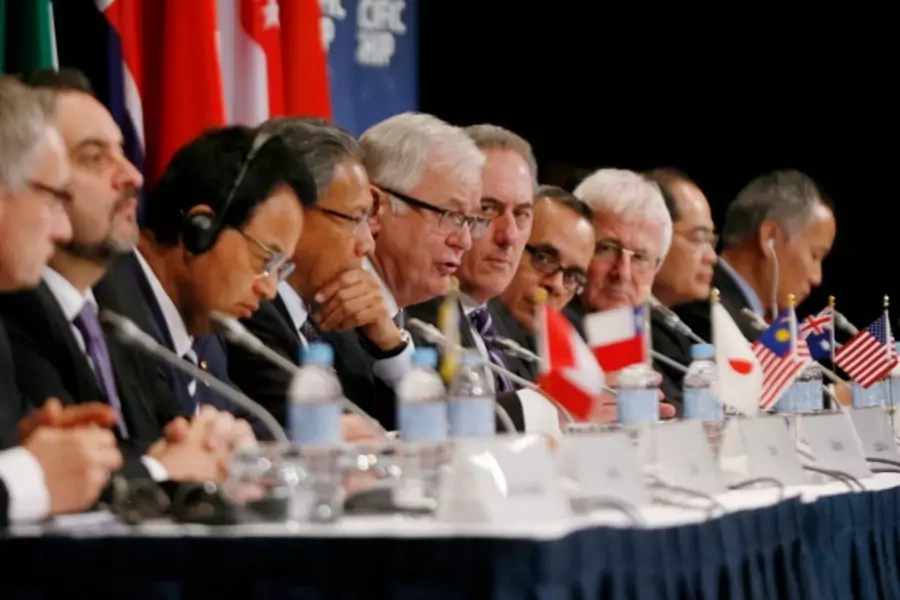What Will the TPP Mean for Southeast Asia?

More on:
With Tuesday’s vote in the U.S. Senate to give President Obama fast track negotiating authority on trade deals, the president is likely to be able to help complete the Trans-Pacific Partnership (TPP), with the United States in the deal, by the end of the year. With fast track authority completed, the United States will be positioned to resolve remaining bilateral hurdles with Japan, the key to moving forward with the TPP.
Four Southeast Asian nations—Brunei, Singapore, Vietnam, and Malaysia—currently are negotiating to be part of the TPP. (The Philippines has expressed interest in joining the negotiations.) Singapore and Brunei were two of the founders of the predecessor to the TPP, long before the agreement was enlarged and the United States decided to join negotiations, and Vietnam decided to participate in TPP negotiations very early on. These four countries’ economies are extremely varied. Unlike a potential free trade deal involving the United States and countries in Europe, the TPP contains both developed and developing nations, including Vietnam, which has a GDP per capita of less than US$2,000.
For Singapore and Brunei, joining the TPP negotiations was a no-brainer. These are countries with miniscule domestic markets, no significant agricultural sectors, and highly open economies. Singapore in particular is one of the most trade-dependent economies in the world; when the 2008-9 global financial crisis hit, Singapore’s economy suffered one of the worst contractions of any developed nation, though it eventually bounced back. And although the Singaporean population has in recent years become more skeptical of high immigration into the city-state, most Singaporeans understand that the city is dependent on trade, and there is little antitrade rhetoric in Singapore.
Yet because Singapore is already so open, having been at the forefront of regional and bilateral Asian trade deals, it has less to gain from the TPP than a more closed economy like Vietnam. In fact, according to some analyses, Vietnam would benefit the most from the deal of any of the countries currently involved in negotiations. Vietnam would gain tariff-free access to U.S. and Japanese markets for its rice, seafood, textiles, and low-end manufactured goods.
Vietnamese officials and academics also are convinced that more liberal members of the leadership in Hanoi see the TPP as a way to force the reduction of loss-making state enterprises and to open sectors of the Vietnamese economy. Hanoi used WTO accession in a similar fashion, to help push forward economic reforms. Although Vietnam has recovered from the slowdown in growth that began in the late 2000s, it has not returned to the same turbocharged growth rates it posted in the early 2000s, and bloated state enterprises remain a major drag on the economy.
Because Vietnam is run by a highly repressive regime, it is very difficult to gauge public sentiment on any important issue. However, from anecdotal conversations with Vietnamese opinion leaders, there seems to be less of the sentiment that state enterprises must be preserved as national champions than exists among Chinese opinion leaders; Vietnam’s state companies, with a few exceptions, are not global giants like China’s biggest state firms. In addition, a recent Pew poll of Vietnamese suggests that the Vietnamese population views the TPP more favorably than people in any other country negotiating the deal—far more favorably than Americans view the TPP.
Malaysian leaders, of all the four Southeast Asian nations, face the toughest test in negotiating the TPP and then convincing the Malaysian public to accept it. Vietnam is an authoritarian regime, as is tiny Brunei; in Singapore there is significant public support for trade. But Malaysia is a hybrid regime, and the Malaysian government has sold TPP to members of the ruling coalition—and conservative Malay supporters—in part by repeatedly assuring them that the government will essentially protect certain state enterprises and programs to support ethnic Malays, even if these protections violate the norms and rules of a free trade deal. With the ruling coalition having gained a relatively narrow victory in the 2013 elections, and now splintering amidst a public fight between Prime Minister Najib tun Razak and former Prime Minister Mahathir Mohamad, it will be very difficult for Malaysian negotiators to return from TPP talks without securing these protections—which they are unlikely to obtain.
Fortunately for Najib, the opposition also is in disarray, its unwieldy coalition split apart at the federal level over differences around religious and social issues. However, the opposition, and Malaysia’s vibrant online media, has raised questions about whether Malaysia has done a comprehensive cost-benefit analysis of the deal before joining TPP negotiations. So, in addition to a group of conservative Malays skeptical of the TPP because of fears it will endanger pro-Malay affirmative action policies, the agreement may not have strong support among urban, liberal Malaysians—the bastion of the opposition. In the Pew poll, a large percentage of Malaysians simply said they did not know enough about the TPP to have an opinion, but the percentage of Malaysians who viewed the TPP favorably also was lower than in most other TPP nations. Perhaps unsurprisingly, Prime Minister Najib, fighting for his political life, has gone from voicing staunch support for the TPP to announcing that the government’s trade negotiators will only accept a deal “on our terms.”
More on:
 Online Store
Online Store